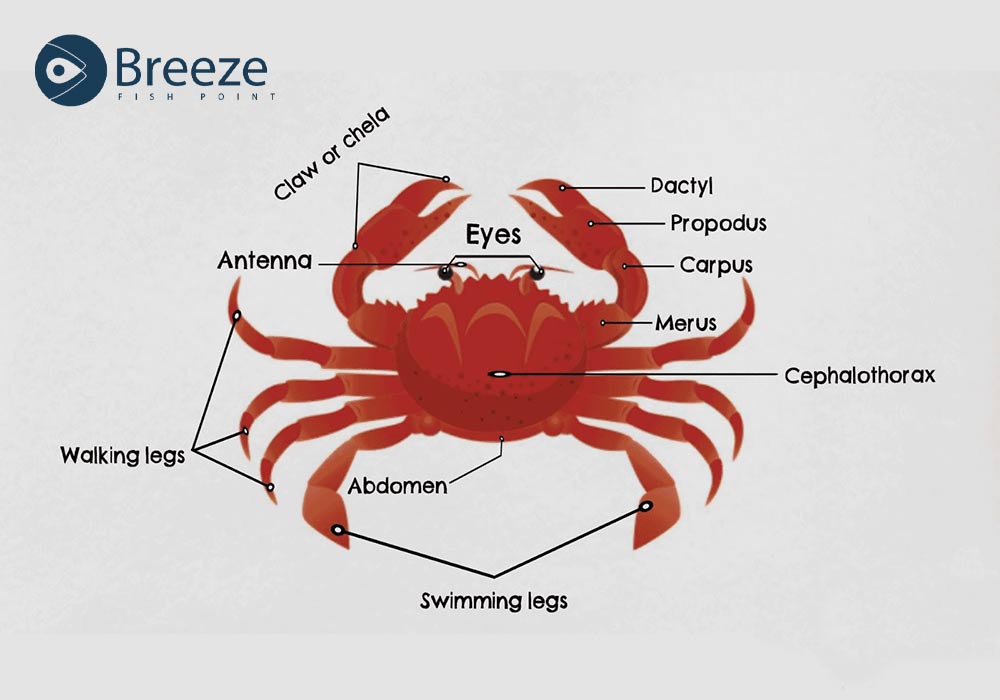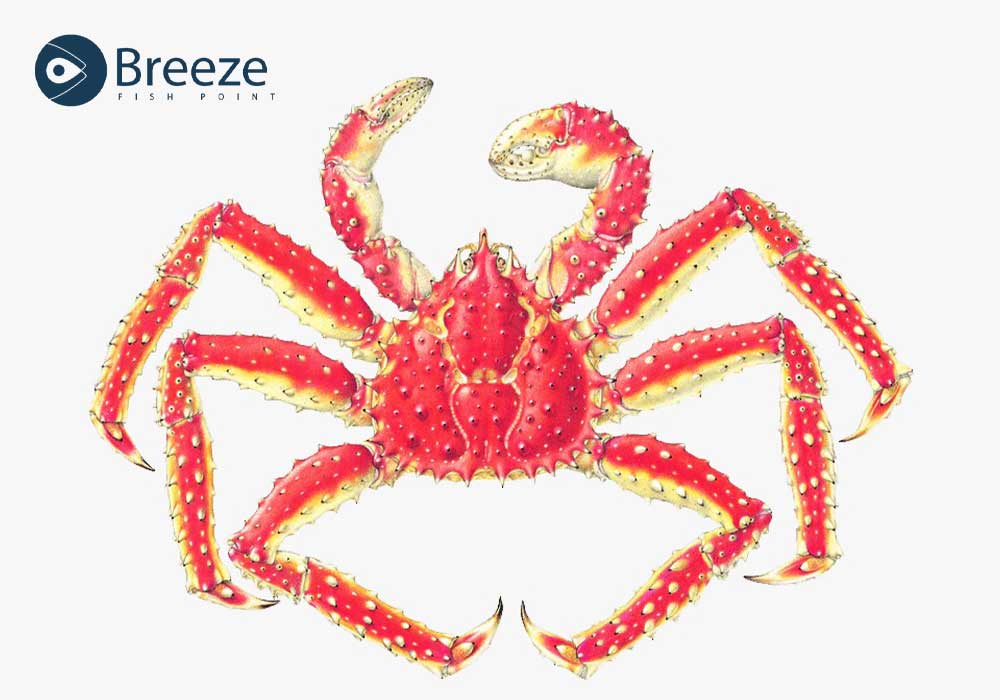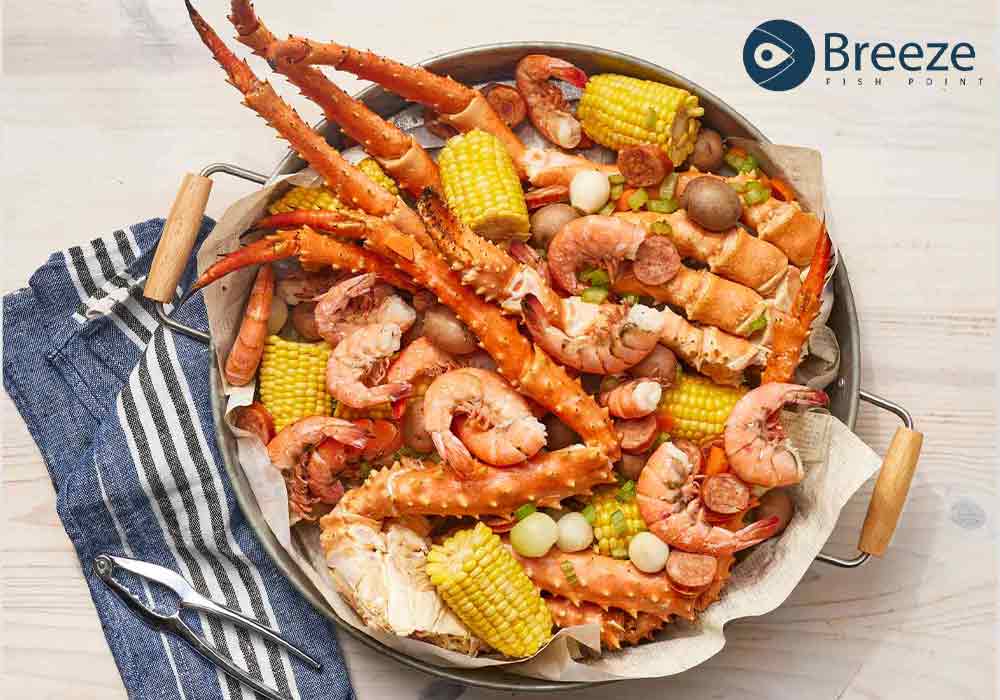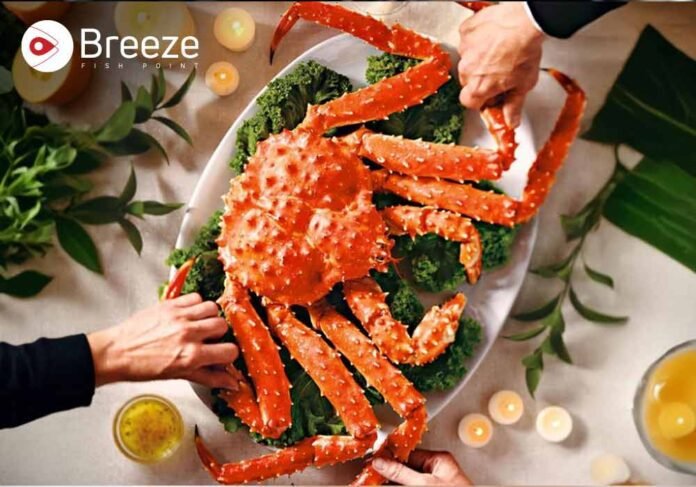Hey there, seafood lovers and curious minds! If you’ve ever cracked open a crab at a seafood boil and marveled at its intricate structure—or maybe just wondered what exactly you’re eating—this blog is for you. The Alaskan King Crab, with its spiky legs and tough shell, is a fascinating creature that’s as complex as it is delicious.
Let’s dive into the world of crab anatomy, explore their unique parts, and answer some burning questions you might have about these ocean dwellers. From their scientific names to how to whip up a killer crab boil, we’ve got it all covered in a way that’s easy to digest and fun to read.
Table of Contents
What Is the Anatomy of an Alaskan King Crab?

The Alaskan King Crab (Paralithodes camtschaticus) is a beast of the sea, and its anatomy is a marvel of nature’s engineering. Let’s break down the crab external anatomy and internal structure to understand what makes this crustacean so unique.
- Carapace: This is the common crab covering, a hard, protective shell that acts like a suit of armor. It shields the crab’s vital organs from predators and the harsh ocean environment.
- Cephalothorax: The head and thorax are fused into one unit, housing the brain, stomach, and other critical organs. This is the core of the crab parts.
- Abdomen: Tucked under the body, the abdomen is small and flattened, unlike in lobsters where it’s more prominent.
- Antennae: These sensory organs help crabs detect their surroundings, from food to potential threats.
- Eyes: Positioned on stalks, the eyes give crabs a wide field of vision to spot danger or prey.
- Mouthparts: Crabs have mandibles and maxillae for chewing and manipulating food—no crab tongue here, just efficient chompers!
The crab diagram below gives a quick visual of these parts:
Crab Part | Description |
Carapace | Hard shell covering the body |
Cephalothorax | Fused head and thorax, houses vital organs |
Abdomen | Flattened, tucked under the body |
Antennae | Sensory organs for detecting the environment |
Eyes | Stalked for wide vision |
Mouthparts | Mandibles and maxillae for chewing |
How Big Can Crabs Get?
When it comes to the size of crabs, Alaskan King Crabs are the giants of the crab world. Their leg span can reach up to 5 feet, and they can weigh as much as 24 pounds! Here’s what influences their size:
- Species: Different species have different growth potentials. For example, the Red King Crab (Paralithodes camtschaticus) is larger than the Blue King Crab (Paralithodes platypus).
- Environment: Nutrient-rich waters and colder temperatures in places like the Bering Sea allow king crabs to grow larger.
- Age: Crabs grow through molting, shedding their exoskeleton as they age, which lets them pack on size over time.
Fun fact: The merus cut king crab—a prime cut from the leg—can be as long as your forearm in a fully grown specimen!
What Are the Key Parts of a Crab’s Anatomy?
Let’s zoom in on crab anatomy basics: parts of the crab. Beyond the external features, crabs have some fascinating internal components:
- Gills: Located in the branchial chambers, gills allow crabs to breathe underwater by extracting oxygen.
- Heart: A simple heart pumps hemolymph (crab blood) through an open circulatory system.
- Digestive System: Includes a stomach that grinds food (sometimes called the gastric mill) and a short intestine.
- Nervous System: A small brain and nerve cords control movement and sensory responses.
- Legs: The number of crab legs is typically 10, including claws, but we’ll dive deeper into that later.
- Claws: Used for grabbing food, defense, and even communication. The crab knuckle is the joint connecting the claw to the leg.
Here’s a quick breakdown of crab parts in a table for clarity:
Part | Function |
Gills | Breathing underwater |
Heart | Circulates hemolymph |
Stomach | Grinds food (gastric mill) |
Legs & Claws | Movement, feeding, defense |
Nervous System | Controls sensory and motor functions |
Does a Crab Have an Exoskeleton?
Yes, crabs absolutely have an exoskeleton! The does a crab have an exoskeleton question is a common one, and the answer lies in their tough outer shell. This exoskeleton, made of chitin, serves multiple purposes:
- Protection: Shields against predators and environmental hazards.
- Support: Acts like a skeleton, giving the crab structure since they lack crab bones.
- Muscle Attachment: Muscles anchor to the exoskeleton for movement.
- Molting: Crabs shed their exoskeleton periodically to grow, leaving them vulnerable until the new shell hardens.
The exoskeleton is why crabs feel so solid when you pick one up—it’s their natural armor!
How Many Legs Does a Crab Have?

One of the top FAQs is how many legs does a crab have? Most crabs, including the Alaskan King Crab, have 10 legs in total. Here’s the breakdown:
- Eight Walking Legs: Used for scooting across the ocean floor.
- Two Claws (Chelipeds): These are modified legs used for grabbing, crushing, and digging.
The number of crab legs can vary slightly in some species, but 10 is the standard for true crabs (Brachyura). Fun tip: When buying crab legs at the market, you’re usually getting the walking legs and claws, with the merus cut king crab being a meaty, sought-after portion.
What Parts of a Crab Can You Eat?
Curious about what part of a crab can you eat? Not every part of a crab is edible, but the tasty bits are worth the effort. Here’s what’s on the menu:
- Legs and Claws: The meat in the crab knuckle and legs is sweet and succulent, especially in king crabs.
- Merus Section: The merus cut king crab is the thickest part of the leg, packed with juicy meat.
- Body Meat: Found in the body cavity, often used in dishes like crab cakes.
- Hepatopancreas (Mustard): Some folks love this creamy, yellowish organ for its rich flavor, but it’s not for everyone.
Pro tip: Avoid the gills, digestive tract, and green tomalley (unless you’re a fan of bold flavors). Always cook crabs thoroughly to ensure safety.
How Do Crabs Taste?
Wondering how do crabs taste? Alaskan King Crab has a sweet, slightly briny flavor with a tender, flaky texture. Here’s why they’re a seafood favorite:
- Flavor Profile: Mildly sweet with a hint of the ocean, less “fishy” than other seafood.
- Texture: Firm yet tender, especially in the legs and claws.
- Versatility: Perfect for boiling, steaming, grilling, or even eating cold with a dipping sauce.
The taste can vary slightly by species and preparation. For example, a crab boil with spices like Old Bay enhances the flavor with a zesty kick.
Do Crabs Have Eyelids or Tongues?
Let’s tackle two quirky FAQs: do crabs have eyelids and do crabs have tongues?
- Eyelids: Nope, crabs don’t have eyelids. Their eyes are on stalks, and they rely on their hard carapace for protection rather than blinking.
- Tongues: Crabs lack tongues as we know them. Instead, they use mandibles and maxillae to process food, grinding and sorting it efficiently.
These adaptations make crabs perfectly suited for their underwater lifestyle, no blinking or licking required!
What Are the Scientific Names of Common Crabs?
Common Name | Scientific Name |
Alaskan King Crab | Paralithodes camtschaticus |
Blue King Crab | Paralithodes platypus |
Dungeness Crab | Metacarcinus magister |
Snow Crab | Chionoecetes opilio |
Blue Crab | Callinectes sapidus |
How to Make a Crab Boil Like a Pro?

Ready to cook up a storm? Here’s how to make a crab boil that’ll impress your friends and family. This classic seafood feast is all about bold flavors and communal dining.
Ingredients
- 4–6 Alaskan King Crab legs (or other crab legs)
- 1 lb shrimp (optional)
- 1 lb andouille sausage, sliced
- 4–6 small red potatoes
- 4 corn cobs, halved
- 1/4 cup Old Bay seasoning
- 2 lemons, halved
- 4 garlic cloves, smashed
- 1 stick butter, melted (for dipping)
Steps
- Prep the Pot: Fill a large pot with water (about 2/3 full) and bring to a boil. Add Old Bay, lemons, and garlic for flavor.
- Cook Potatoes: Add potatoes and boil for 10 minutes until slightly tender.
- Add Corn and Sausage: Toss in corn and sausage, cooking for 5 more minutes.
- Add Crab: Place crab legs in the pot, ensuring they’re submerged. Boil for 4–5 minutes (pre-cooked legs just need heating; fresh legs may need 8–10 minutes).
- Optional Shrimp: If using shrimp, add them in the last 2 minutes.
- Drain and Serve: Drain the pot, spread the feast on a table lined with newspaper, and serve with melted butter for dipping.
Tips for Success
- Freshness Matters: Use fresh or properly thawed crab legs for the best flavor.
- Spice It Up: Adjust Old Bay to taste, or add cayenne for extra heat.
- Serve Hot: Crab boils are best enjoyed warm, so dig in right away!
FAQs
Q1: How many legs does a crab have?
Q2: What part of a crab can you eat?
Q3: How do crabs taste?
Q4: Do crabs have eyelids?
Q5: Do crabs have tongues?
Bonus Tips for Crab Lovers
- Molting Magic: Crabs grow by molting, shedding their exoskeleton. This process can happen multiple times a year for young crabs.
- Sustainability: Choose crabs from sustainable fisheries to support healthy ocean ecosystems.
- Storage: Keep crab legs frozen or refrigerated and cook within a day of thawing for peak freshness.




